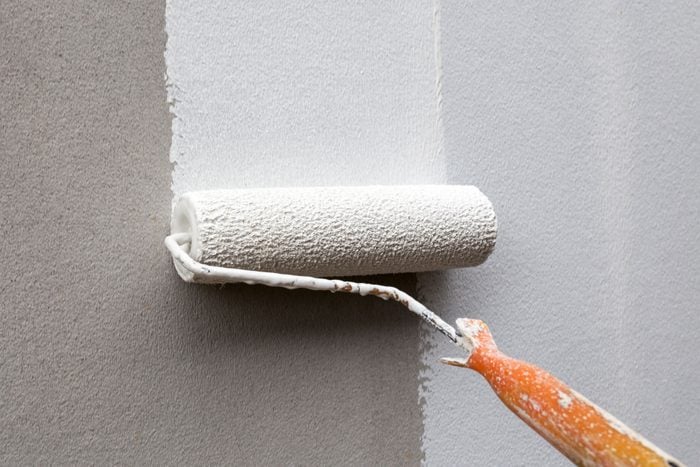Eggshell vs. Satin Paint: What’s the Difference?
Date: 25 May 2024
When selecting paint colours for a room, don't forget to consider the sheen, which refers to the level of shininess in a paint finish. Sheen influences the paint’s appearance, durability, and washability.
The sheen categories, ranging from the most to the least shiny, include gloss, semi-gloss, satin, eggshell, matte, and flat. “Think of sheen as a spectrum from glossy to flat,” explains Troy Hillard from The Handyman Group. “Imagine the contrast between a mirror and sandpaper—that’s the difference between glossy and flat paint finishes.”
Eggshell is an interior paint with a sheen between flat and satin. The term comes from its slightly textured finish resembling an eggshell. It’s popular for its velvety, mildly reflective look on walls.
What is eggshell paint good for?
“Eggshell is mainly chosen for bedroom, living room, hallway, and entryway walls,” Troy states. If you want a sheen that cleans well and doesn’t reflect much light, eggshell is the ideal choice.
Eggshell paint is not suitable for trim and woodwork because it lacks the durability and washability of glossier paints. It’s also not recommended for high-humidity areas like bathrooms and kitchens.
Does eggshell paint need two coats?
“Ideally, all painted surfaces should get two coats unless specified otherwise by the manufacturer,” says Troy. However, for repainting walls in the same colour, one coat might be enough.
Should you use a roller or brush for eggshell paint?
Both options work. Use a roller for large, open areas and a brush for edges and tight spots.
Pros and cons of eggshell paint
Eggshell paint looks great on walls, hides some imperfections, and leaves a smooth, velvety finish that can be cleaned. However, it doesn’t withstand scrubbing as well as satin paint and isn’t as durable.
What is satin paint?
Satin paint is a paint with a slightly higher sheen than eggshell but less than semi-gloss. When dry, it resembles satin fabric, with a luminous and subtle glow. Satin paint is versatile, suitable for both walls and woodwork.
What is satin paint good for?
“Satin is often used on kitchen and bathroom walls,” Curving says. Its smooth finish prevents moisture from penetrating the paint, unlike flat or eggshell paint. “Sheen is important, especially in moist environments like bathrooms,” he notes.
Satin paint is also washable. “Use glossy paints, including satin, in areas that require frequent cleaning,” Troy advises.
It’s also great for front doors, decorative trim, or crown molding. “Satin paint on trim stands out, especially against an eggshell wall,” Vaughn adds.
When should you use satin paint?
Satin paint works well in kitchens and bathrooms, and on woodwork like trim and cabinets. It’s also ideal for high-traffic areas prone to dirt, like mudrooms or kids’ bedrooms. “I use it on walls where washability is important,” Vaughn says.
What’s the best way to apply satin paint?
Use a brush or roller, depending on the surface.
For walls, use a roller for open areas and a brush for detailed work like edges and corners. To achieve a smoother finish with a roller, Curving suggests using a short nap of 7mm- or 4mm. “This helps reduce the orange peel or dimpled effect caused by the roller,” he explains.
Pros and cons of satin paint
Satin paint is praised for its washability and moisture tolerance. Depending on your preference, its higher light reflectivity can be a pro or a con.
A drawback? “Satin will highlight any uneven or rough areas of a wall,” Vaughn says. It’s best for new construction or very smooth walls.
What’s the better paint finish for interior walls?
It depends. Eggshell is ideal for imperfect walls in low-humidity areas with moderate washability needs. Satin is better for moisture-prone areas like bathrooms or rooms requiring frequent cleaning, such as children's bedrooms.
Which paint sheen hides imperfections better?
“Eggshell is less shiny, so it won’t highlight imperfections as much,” Curving says.
Is eggshell or satin easier to clean?
Satin, due to its shinier, smoother surface. “The shinier the finish, the less likely dirt, humidity, and moisture can penetrate the paint surface,” Curving explains, “which enhances its washability.”
Back...
